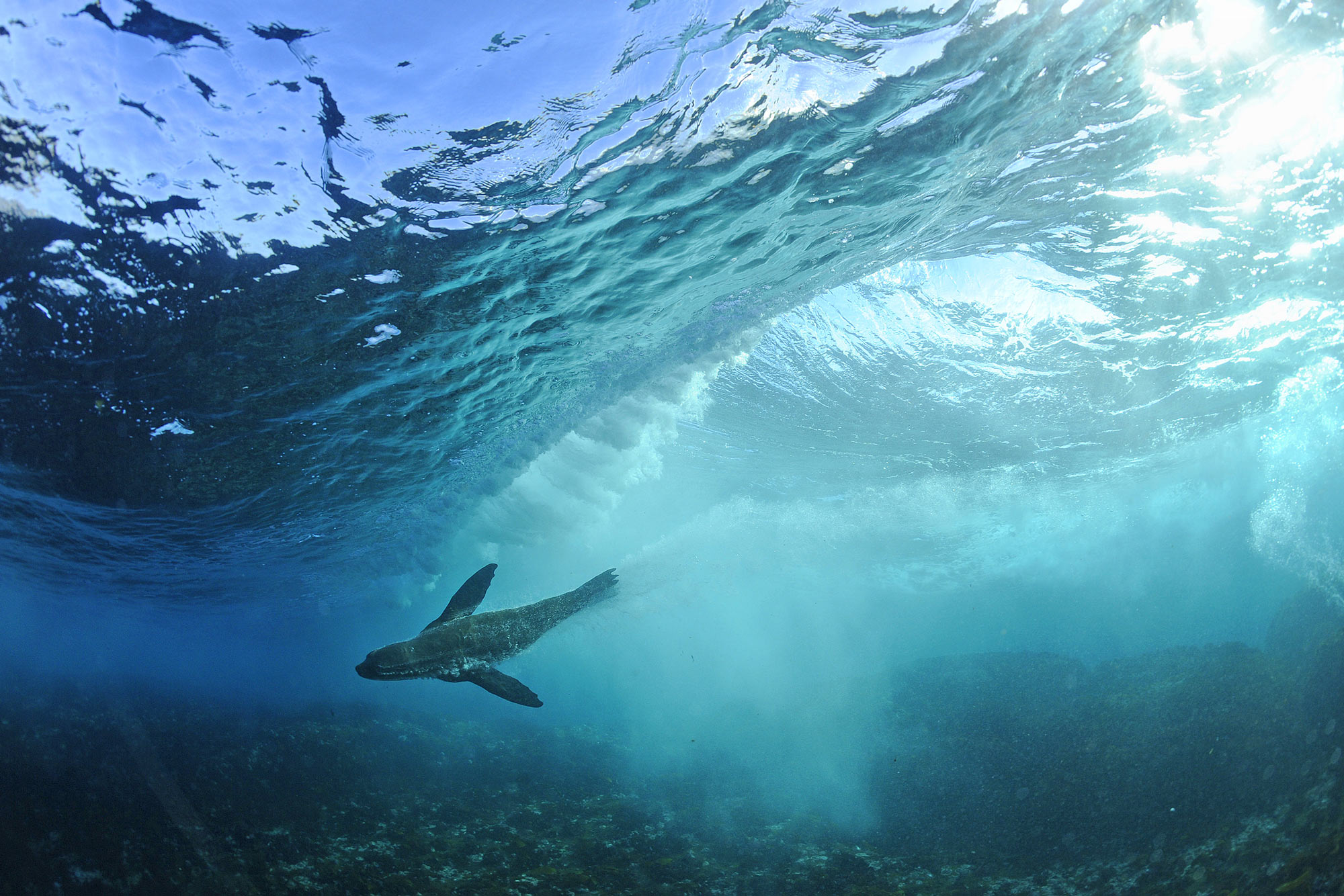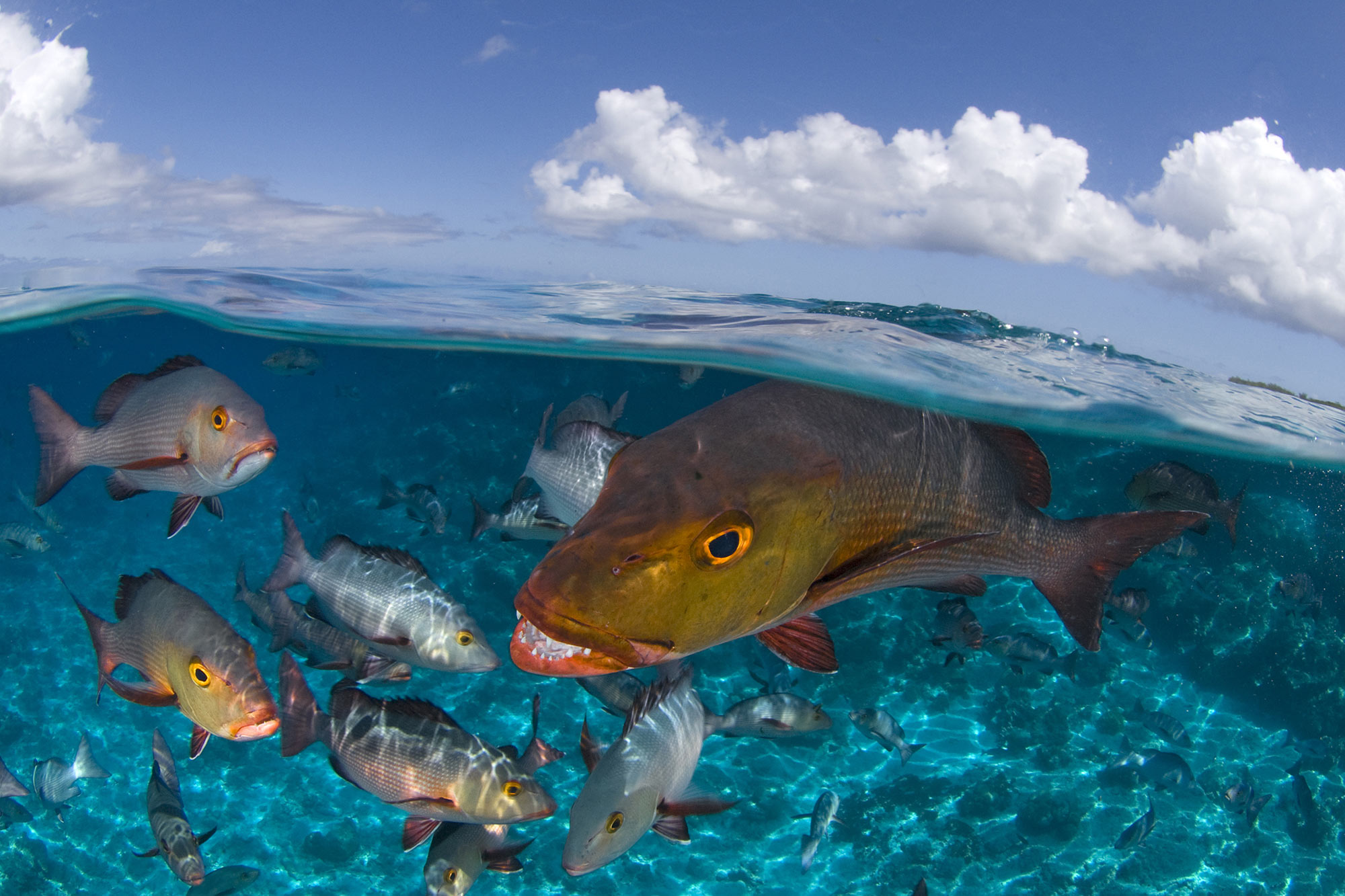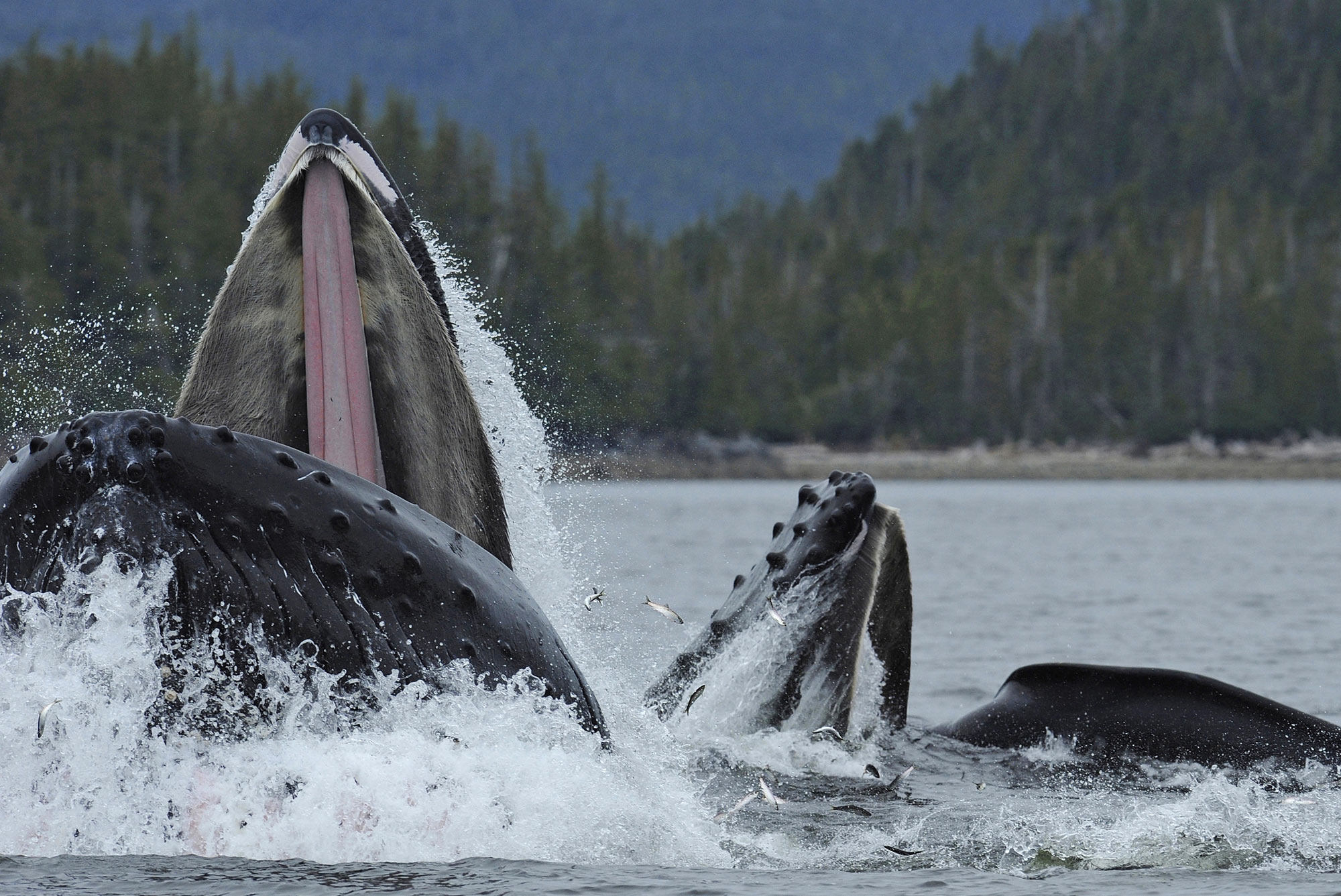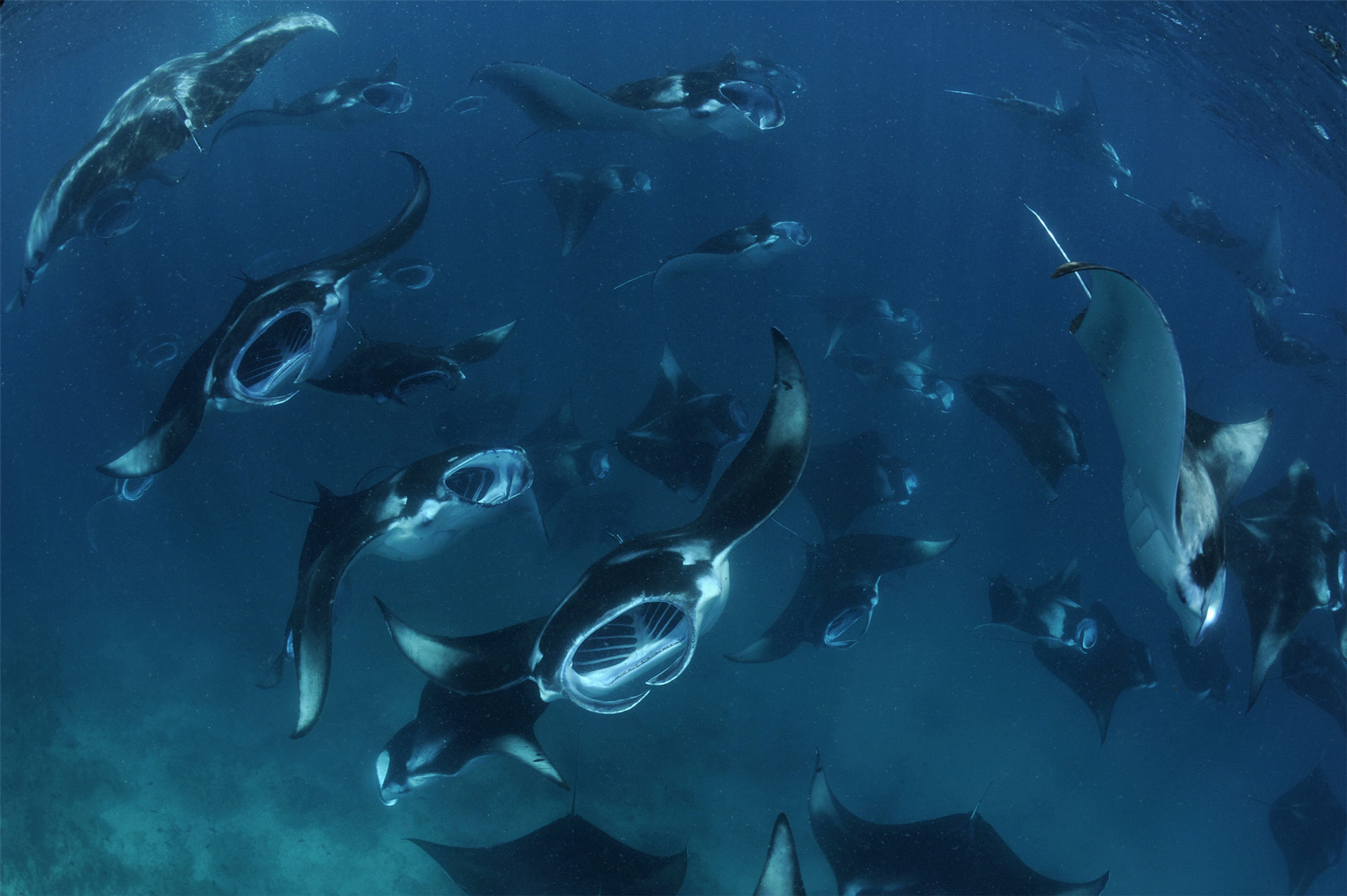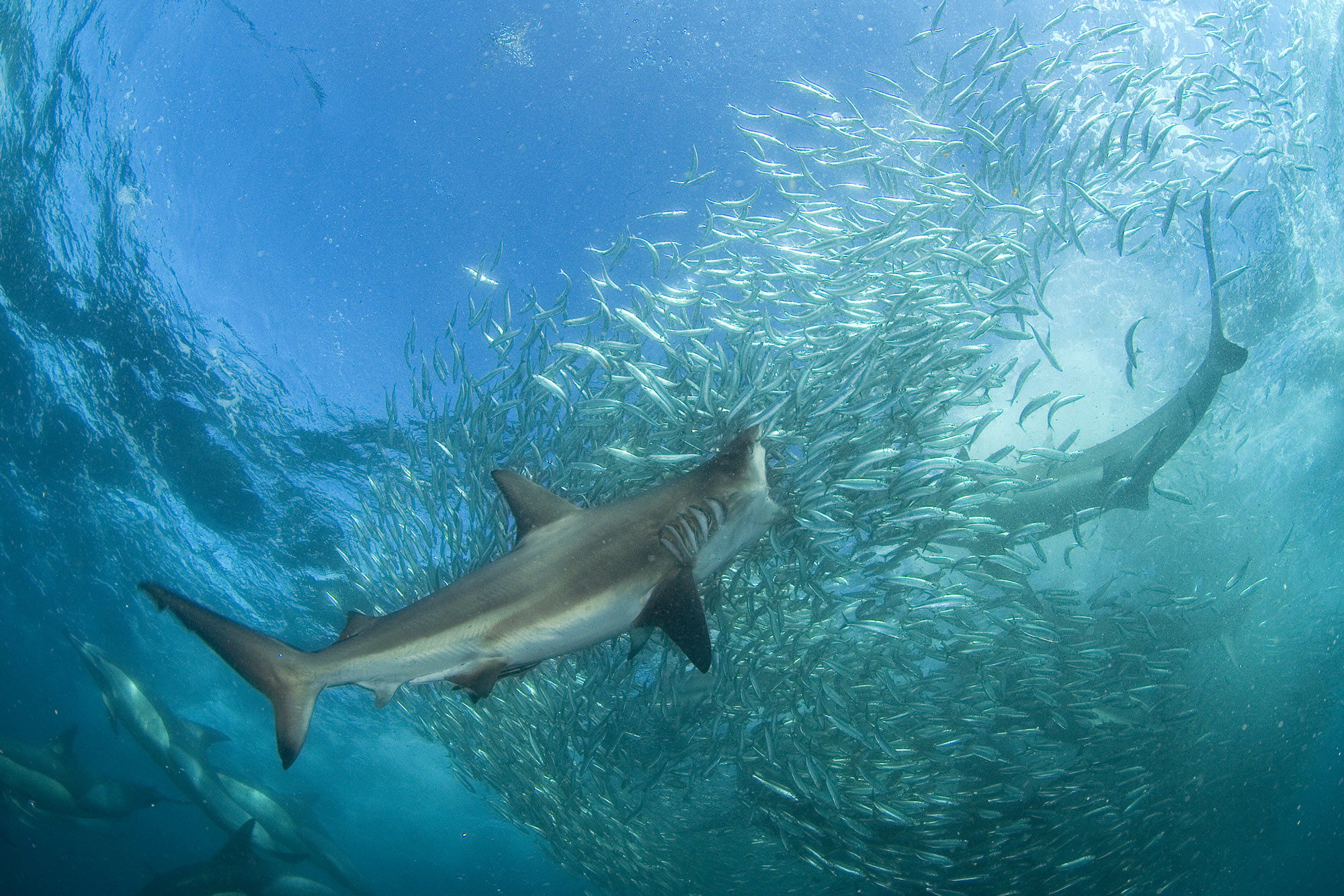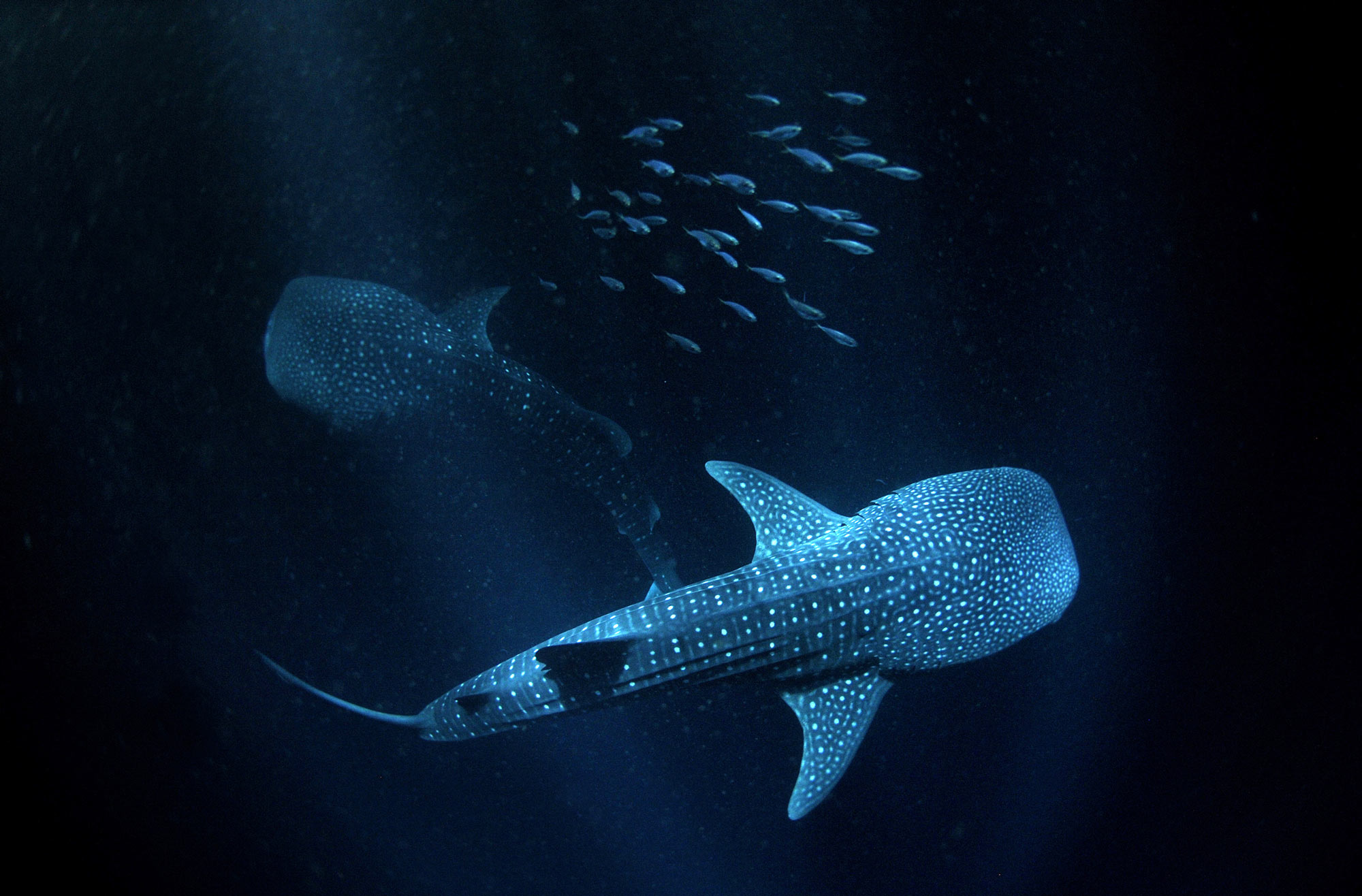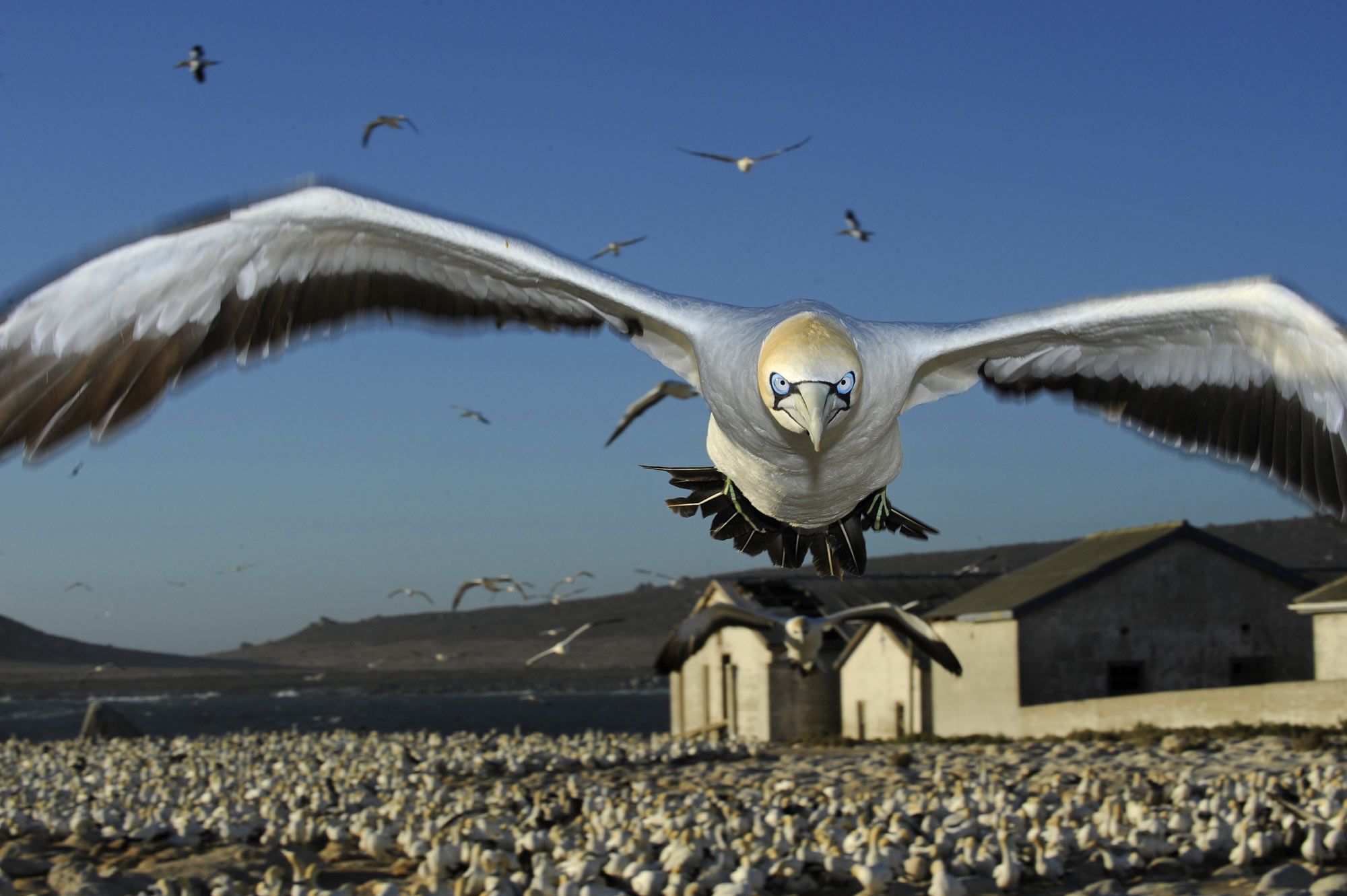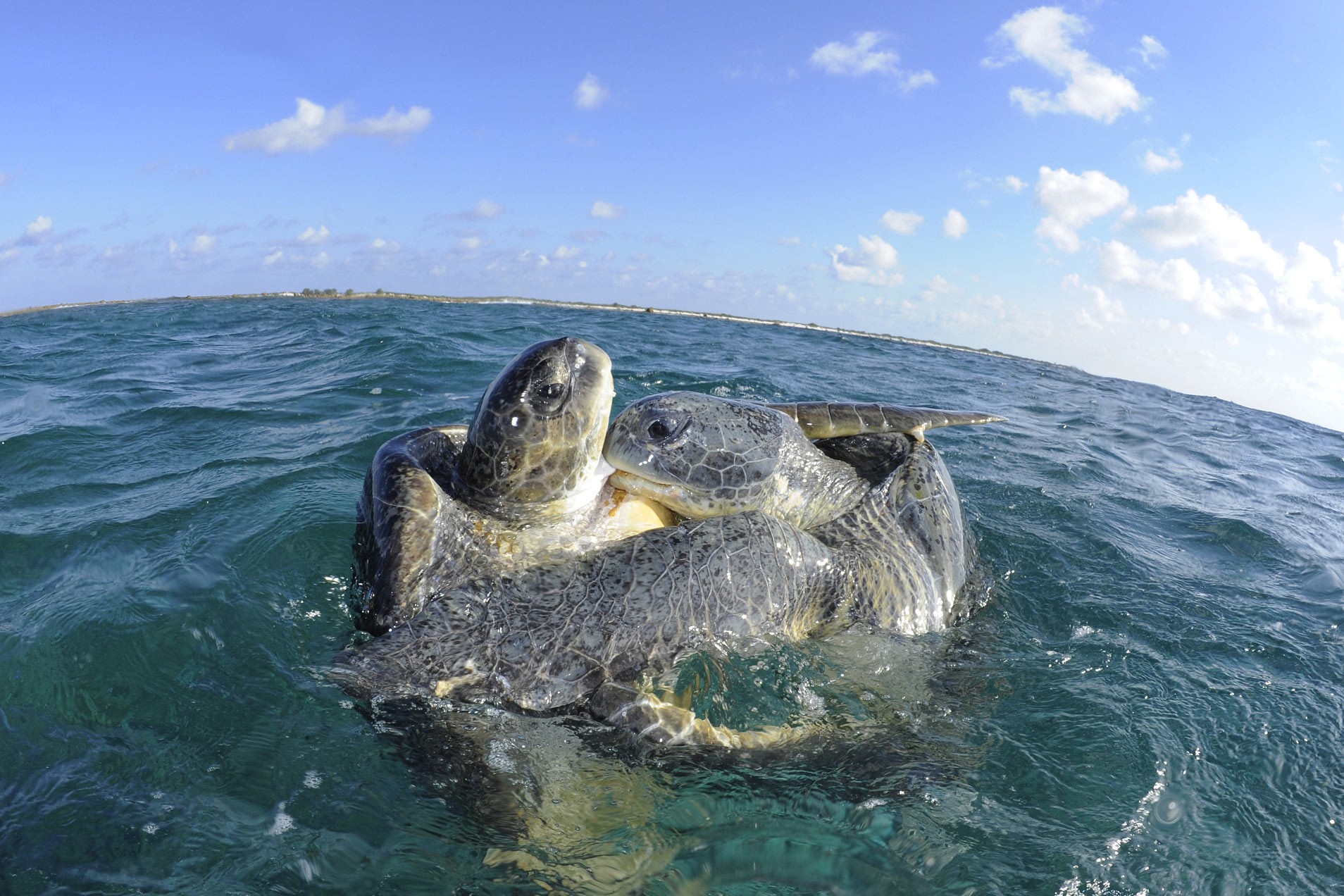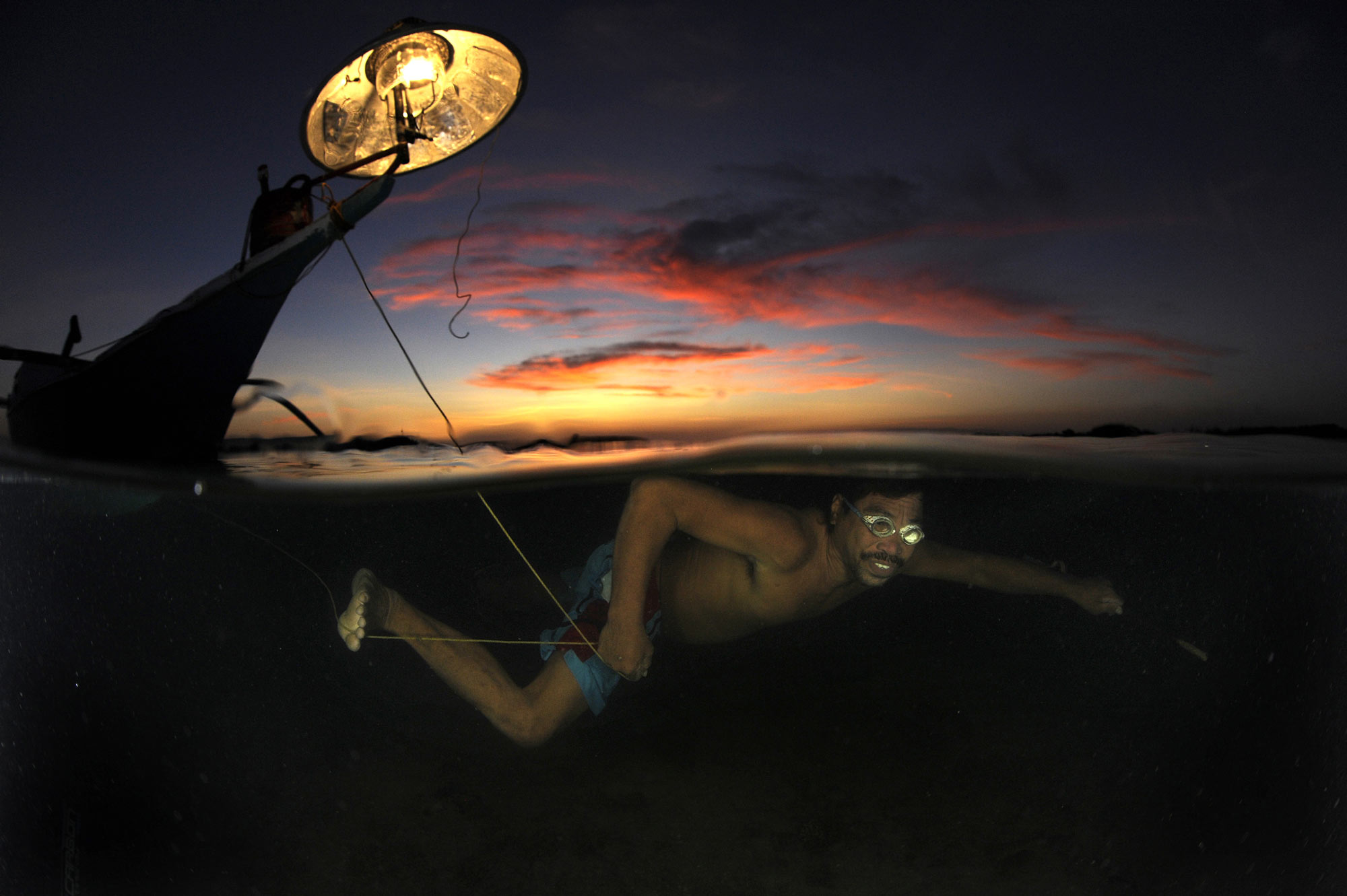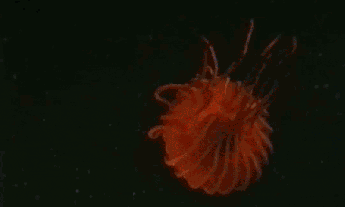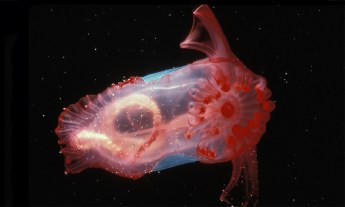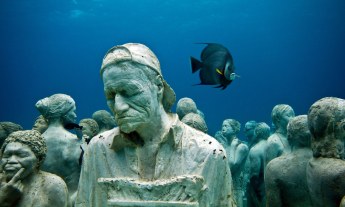Thomas Peschak takes stunning, up-close pictures of starfish, sharks and whales. His goal? To make us fall in love with them.
A surfing seal. A pair of turtles, necking. A curious fish.
Thomas Peschak doesn’t just show us creatures that live in the ocean; his photos capture their personality. “If you want people to care about a species or a habitat, you have to try and infuse it with character,” he says.
Peschak, who photographs for National Geographic, does extensive research on every species he photographs and spends days, sometimes weeks, with each one as he creates the perfect image. He’d like to introduce you to ten ocean creatures, each of which will surprise you — even if it’s one you think you know.
The surfing seal
Because the Cape fur seal is common off the coast of Southern Africa, there are “thousands of pictures of them, all more or less the same,” says Peschak. He set out to show something specific: that these seals love leisure time. “They go out surfing for hours and hours on end,” he says. To photograph this, he had to wait for a day when the waves were big enough for the seals to surf, but not so big that they would clobber him. “The seals have a wonderful insulation layer of fur and fat,” says Peschak. “If they get smashed into a rock, they’re going to be in way better shape than I am.” He got tossed about by waves, yes, but in the end got the shot he was looking for, one that captures these seals’ playful, thrill-seeking behavior.
The curious snapper
In most places where Peschak dives, the marine life is afraid of him, so he has a hard time getting close, as everything swims away. That’s not the case in Aldabra, a remote marine reserve in the Indian Ocean. Here, Peschak got up close and personal with Bohar snappers, which can grow to be more than two feet long. “These fish are quite curious. They want to bite everything,” he says. “They like shiny objects and take a lure quickly.” Because of their outgoing personalities, Bohar snappers are often one of the first species fished out of an area — so Peschak found it a treat to swim with the thousands of them that live in this reserve, where fishing isn’t allowed. He loved swimming with these fish, even though they bite. “They offer free ear piercings. Your earlobe sticking out from under your hair captures their attention — they go after them with those dracula teeth,” he says. “Having marine life come up to you and bump your camera — even if it’s just to take a bite out of you — that’s a photographer’s dream.”
The whale with halitosis
Most people have seen photos of a humpback whale’s tail. “But they’ve never looked into a whale’s mouth,” says Peschak. This image was the result of months of work with scientists who study whale feeding behavior off the coast of Canada. “They bubble-net feed,” says Peschak. “A pod of five or six whales swim under a school of herring and release a curtain of bubbles. As the bubbles rise, the curtain pushes the fish to the surface. The whales swim through, mouths agape.” Peschak wanted to photograph both the herring jumping out of the water and the whale trying to chomp them, which wasn’t easy given the fact that all of this happens in seconds. Adding to the intensity of the shoot: the fact that the whales can have terrible breath. “Imagine you go on holiday for two weeks and you mistakenly unplugged your refrigerator,” says Peschak. “It can smell like that initial burst of stench.”
A somersault of manta rays
In Hanifaru Bay in the Maldives, the monsoon winds of the summer and fall push nutrients to the water’s surface. Manta rays migrate here to cyclone feed on the zooplankton. “In a DNA helix-like column, the mantas swirl in tight formation, creating their own vortex that delivers plankton right into their cavernous mouths,” says Peschak. “You can have more than 100 of these rays feeding in unison in an area the size of a basketball court — and they can have a six-to-nine foot wingspan. So there’s this sort of shapeshifting, Tetris-like puzzle of manta rays above you as you’re trying to come to the surface.” The rays don’t sting — but they do hit. “They’re oblivious to you. You really have to be hyper-aware of where you are in relation to them to avoid a collision.”
The sneaky shark
Every year, sardines migrate north along the coast of South Africa. As they swim, dolphins break up the party, isolating big groups of fish. Bronze whaler sharks seize this opportunity. “They rush in, like an industrial-strength vacuum cleaner and hoover up fish,” says Peschak. “I remember this one shark turning around and rushing past me with all these sardine heads and tails hanging out of its mouth. I missed that picture.” Peschak stresses that of the 300 shark species out there, only a handful have the ability to injure a human. “If you grew up around dogs, you understand that if a dog wags its tail, you can pet it, but that if the dog is growling, you’d better stay away. People don’t spend any time with sharks, so don’t really understand shark behavior,” says Peschak. “They’re not cuddly animals; they’re predators. But they’re not out to get you.”
The starfish buddies
“Sometimes I come across a scene that’s just quiet and peaceful,” says Peschak. “To me, it looks like these starfish are holding hands and crossing the road.” Sadly, there’s a dark side to the sweetness of the image. “This species of starfish is being wiped out by a wasting disease in the Northeastern Pacific,” he says. “A virus is believed to be the culprit, and if things continue, we don’t know how much longer a scene like this will be common.”
The night-swimming shark
Peschak captured this image of polka-dotted whale sharks off the coast of Djibouti in Africa. Fisherman here go out at night, with lamps hanging off their boats to attract plankton and fish. “The whale sharks follow behind, hoovering up plankton,” says Peschak. Photographing sharks with only a thin beam of light is eerie — but also magical, and surprisingly personal. “The spot pattern of each whale shark is unique; it’s like a human fingerprint,” he says. “We can identify an individual whale shark year after year based on its blotches. The software used to map the spot patterns on the sharks was originally designed by NASA to map galaxies and stars.”
The determined bird
Malgas Island in South Africa is “like a busy airport,” says Peschak. That’s because it’s a sanctuary for Cape gannets, which fly out to find food and then return to the nest to feed their young. “Hundreds of birds come in at the same time, but there are very few midair collisions,” says Peschak. “The birds fly in holding patterns.” The birds circle around, using a unique call to search for their mate. When they find their nest, they “drop out of the sky” and land right next to their partner. Peschak sat on a hill for days waiting to get a head-on shot of a bird approaching its nest. “You can see its determination,” he says. For a moment, he worried the bird might hit him, but it skimmed over his head. “I could feel the rush of air going over me and the whooping sound of the wings,” he says.
The lusty turtles
Did you know that sea turtles neck? Peschak discovered this while photographing in the Europa Atoll, a sanctuary between Madagascar and Mozambique where turtles meet up to mate. Peschak had seen male turtles on top of female turtles, hanging on for hours. “Turtle mating is a lengthy, rowdy affair,” he says. “But I never quite knew how the male turtles managed to get on top. Not all females are receptive.” Peschak discovered the secret when he caught these turtles in the act. To his surprise, “the male bites the female in the neck or on the body, and then uses that as leverage to climb onto the back.” A few weeks after mating, the females haul up on the beach to lay their eggs.
The human being
“This is a very old way of fishing using only homemade goggles, a hand spear and kerosene lamps,” says Peschak of this photo of a lantern fisherman in the Philippines. “At night, this fisherman drags his boat looking for fish, octopus and crabs.” In the five hours Peschak spent with him, the man caught three fish — all the size of a finger. “The sad reality of this picture is that many indigenous cultures, while they still maintain their connection with the ocean, have been besieged by people who don’t,” says Peschak. “Even though we in the developed world might be removed from the ocean, what we eat and buy still impacts the livelihoods and survival of those who are connected to the ocean in a powerful way.”
In 2015, Thomas Peschak gave a TED Talk, Dive into an ocean photographer’s world, aboard Mission Blue II, a TED event on ocean conservation hosted by TED Prize winner Sylvia Earle.

